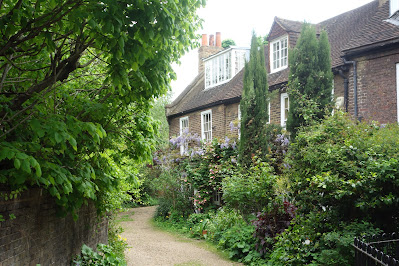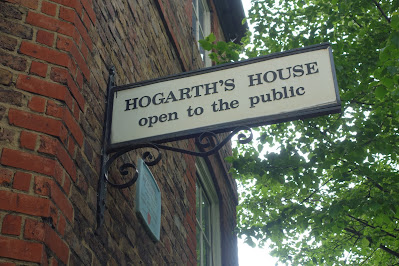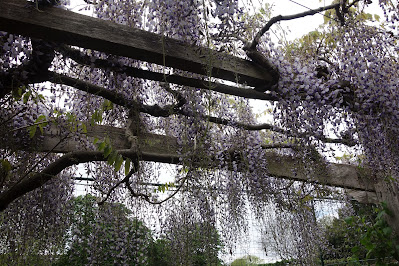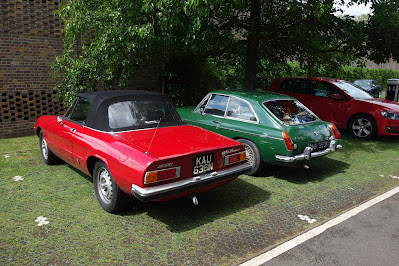Today we saw a fascinating exhibit at the British Museum on the life of the Roman Emperor Nero and his reputation, established almost 2000 years ago, as a degenerate and cruel sovereign. After his father died, Nero was brought up by his mother, Julia Agrippina, a sister to Caligula, the third emperor of Rome. After reputedly poisoning her second husband, Agrippina became the wife of the fourth emperor, Claudius. Wanting her son Nero to succeed as emperor (rather than Claudius' son Britannicus), Agrippina ostensibly had Claudius poisoned.
 |
| A marble statue of Nero as a young boy, AD 50-54 |
 |
| Marble statue of Tiberius Second emperor of Rome |
 |
| Nero |
 |
| Marble statue of Emperor Claudius Fourth Emperor of Rome |
 |
| Marble statue of Mesallina Valeria Third wife of Emperor Claudius Who was said to have had 150 lovers |
 |
| Marble state of Nero, AD 54-9, After Nero became emperor statues like this were created to serve a rising demand for his images. |
Thanks to his mother's machinations, Nero became the fifth Roman emperor at the age of 16 years in the year AD 54. Nero ruled for 14 years during which time he had Britannicus, Agrippina and his first two wives put to death. He set Rome on a fire and fiddled as the city burned. He blamed the fire on Christians, and had many of them burned, crucified and fed to lions. When the senate declared Nero to be an enemy of the state, he committed suicide at the age 30. This is the narrative that we have been told for almost 2000 years but is it the truth?
 |
| Agrippina Crowns Her Son Nero A copy of a relief from present day Turkey |
 |
| Soldiers of the Praetorian Guard, AD 50-51 A commemoration plaque celebrating Claudius' conquest of Britain in AD 43 |
 |
| A marble cast of Seneca, AD 200-24, Nero's tutor. Highly admired but forced to commit suicide toward end of his reign. |
 |
| Chains found in a lake in Wales BC 100 - AD 70 |
 |
| A small bronze statue of Nero in military garb |
 |
| A bronze head of Nero, found in Colchester England AD 54-61 Statue perhaps decapitated in battle with Queen Boudicca of the Celtic Iceni tribe. |
 |
| A marble statue AD 59-64 of Nero to mark his 5th year anniversary as emperor Marble theater masks AD 1-79,from Pompeii. |
 |
| A plaster and paint wall painting AD 62-79 depicting the story of Orestes From a house in Pompeii |
 |
| A stucco and painted panel AD 62-79 from a house in Pompeii. |
 |
| Nero's third wife Statilia Messalina Little is known about her. |
 |
| Nero's 2nd wife, Poppaea Sabina |
 |
| A dark green stone statue of Agrappina AD 49-59 Nero justified her death to the senate claiming that Agrippina had planned to assassinate him |
 |
| A terracotta panel depicting the Circus Maximus in Rome, AD 40-70 |
 |
| A terracotta panel depicting the Circus Maximus in Rome, AD 40-70 |
 |
| A marble statue of Nero AD 64-8 perhaps made to commemorate his 10-yr anniversary as emperor His hairstyle set a new trend that remained fashionable for decades |
The exhibit at the British Museum asks us to consider not only who crafted the oft-told stories about Nero but, more importantly, why, acknowledging that Nero had a lot powerful enemies who felt their secrets, schemes and status were threatened by him.










































